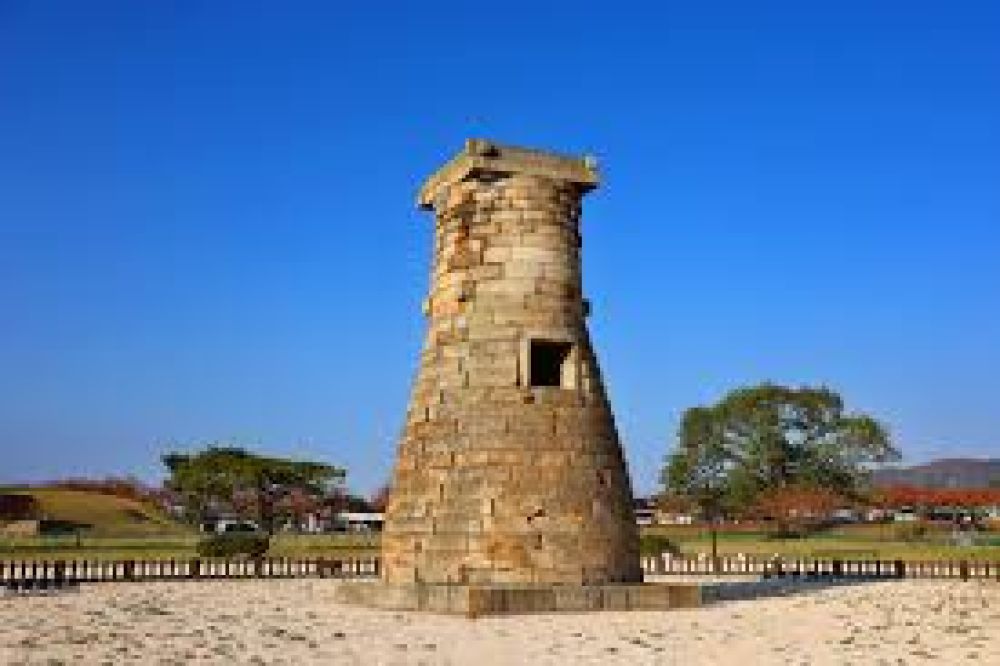Cheomseongdae is an ancient astronomical observatory located in Gyeongju, South Korea. It is one of the oldest surviving observatories in East Asia and dates back to the 7th century during the reign of Queen Seondeok of the Silla Kingdom. The name 'Cheomseongdae' means 'star-gazing tower' in Korean. This 9-meter tall edifice is comprised of 362 stones, which some claim represent the days of the lunar year. Cheomseongdae has a cylindrical shape with a square base, reflecting a fusion of Buddhist and Confucian architectural influences. It functioned to observe the stars in order to forecast the weather and make agricultural and calendrical predictions. Cheomseongdae is designated as National Treasure No. 31 of South Korea and is a testament to the advanced scientific knowledge and architectural skills of the Silla period. It is located in a historically rich area near the Tumuli Park Belt, with royal tombs and other cultural relics. The observatory embodies a significant historical heritage and astronomical precision, making it a fascinating destination for visitors interested in history, science, and ancient Korean culture.

